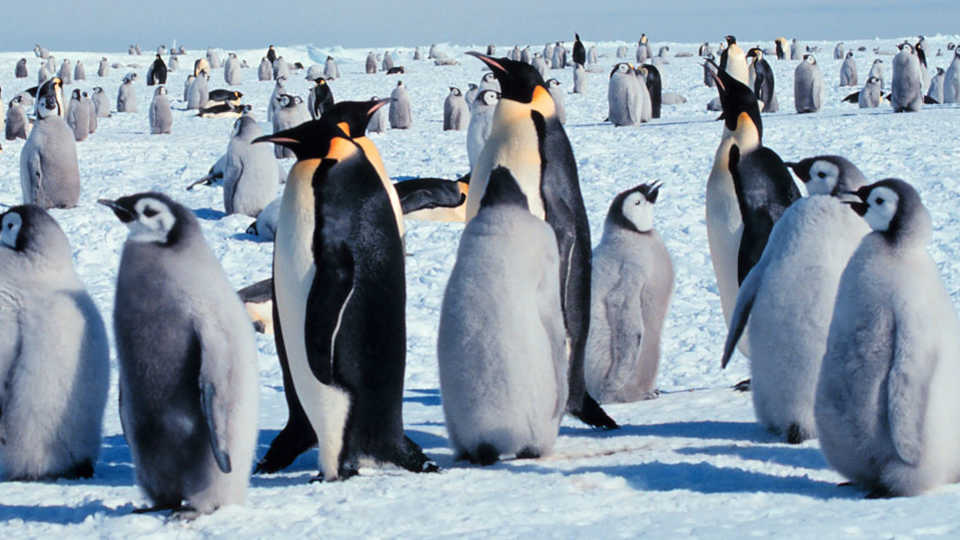In this activity, students will:
- listen to a story about penguins.
- pretend to be an Emperor penguin carrying an egg using their feet to understand how they care for their young.
- learn how harsh conditions can make it hard to survive.

© Giuseppe Zibaldi
Emperor penguins have a tough lifecycle! In this activity, students learn about the lifecycle of the Emperor penguin and play a game to model some of the harsh conditions faced by the penguin parents.
In this activity, students will:
Discuss as a group what you learned. You can ask the following questions:
Emperor Penguins are monogamous, meaning they only have one mate and stay faithful to that mate. They begin courtship during March and April when the temperature can be as low as −40°C (−40°F). This courtship involves a courtship call by the male, which attracts the female. Once in pairs, couples waddle around the colony together.
After laying her egg, the mother becomes very exhausted and she very carefully transfers the egg to the male, before immediately returning to the sea for two months to feed. The egg of the Emperor Penguin is 12 × 8 cm (4¾ x 3 in) and somewhat pear-shaped. The female penguin lays one 460–470 g (1 lb) egg in May or early June. The transfer of the egg can be awkward and difficult, and many penguin couples drop the egg during this process. When this happens, the chick inside is quickly lost, as the egg cannot withstand the freezing temperatures on the icy ground.
The male spends the winter incubating the egg, balancing it on the tops of his feet and covering it with a thick layer of feathered skin, for 64 consecutive days until hatching. The Emperor Penguin is the only penguin species where the father takes sole responsibility for incubating the egg. By the time the egg hatches, the male will have fasted for around 115 days since arriving at the colony. To survive the cold and winds of up to 200 km/h (120 mph), the males huddle together, taking turns in the middle of the huddle. They have also been observed with their backs to the wind to conserve body heat.
Grade 1
Life Sciences
Grade 2
Life Sciences
Science & Engineering Practices
Disciplinary Core Ideas
Cross-Cutting Concepts
Related Performance Expectations
Markle, S. 2005. A Mother’s Journey. Charlesbridge Publishing.
Tatham, B. 2008. Penguin Chick. HarperCollins Publishing.
Wikipedia, The Free Encyclopedia. Emperor penguin. Retrieved February 9, 2012.
Pioche, B. and the National Geographic Society (producers). March of the Penguins. 2005
Jenkins, M. 2002. The Emperor’s Egg. Candlewick Publishing.